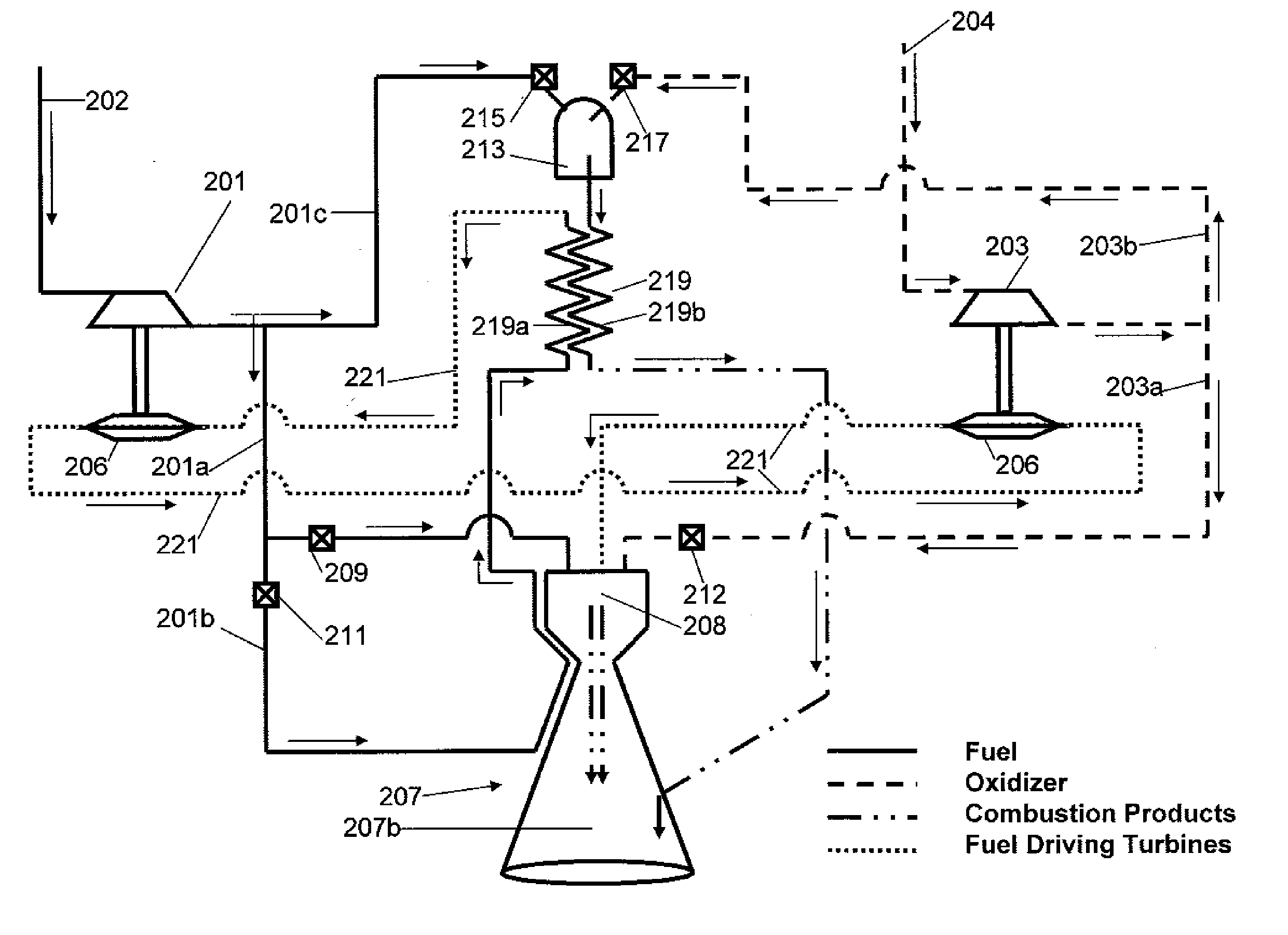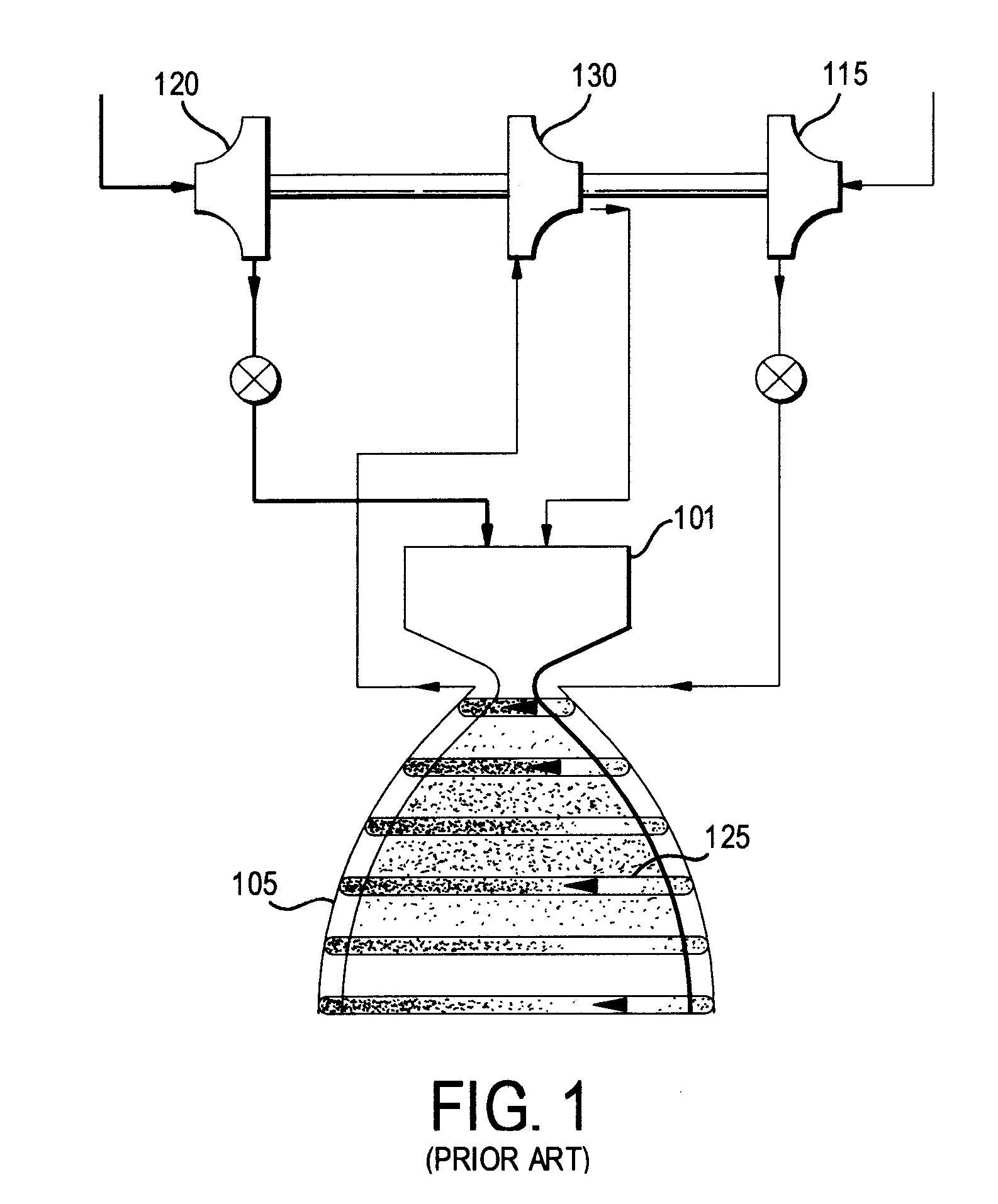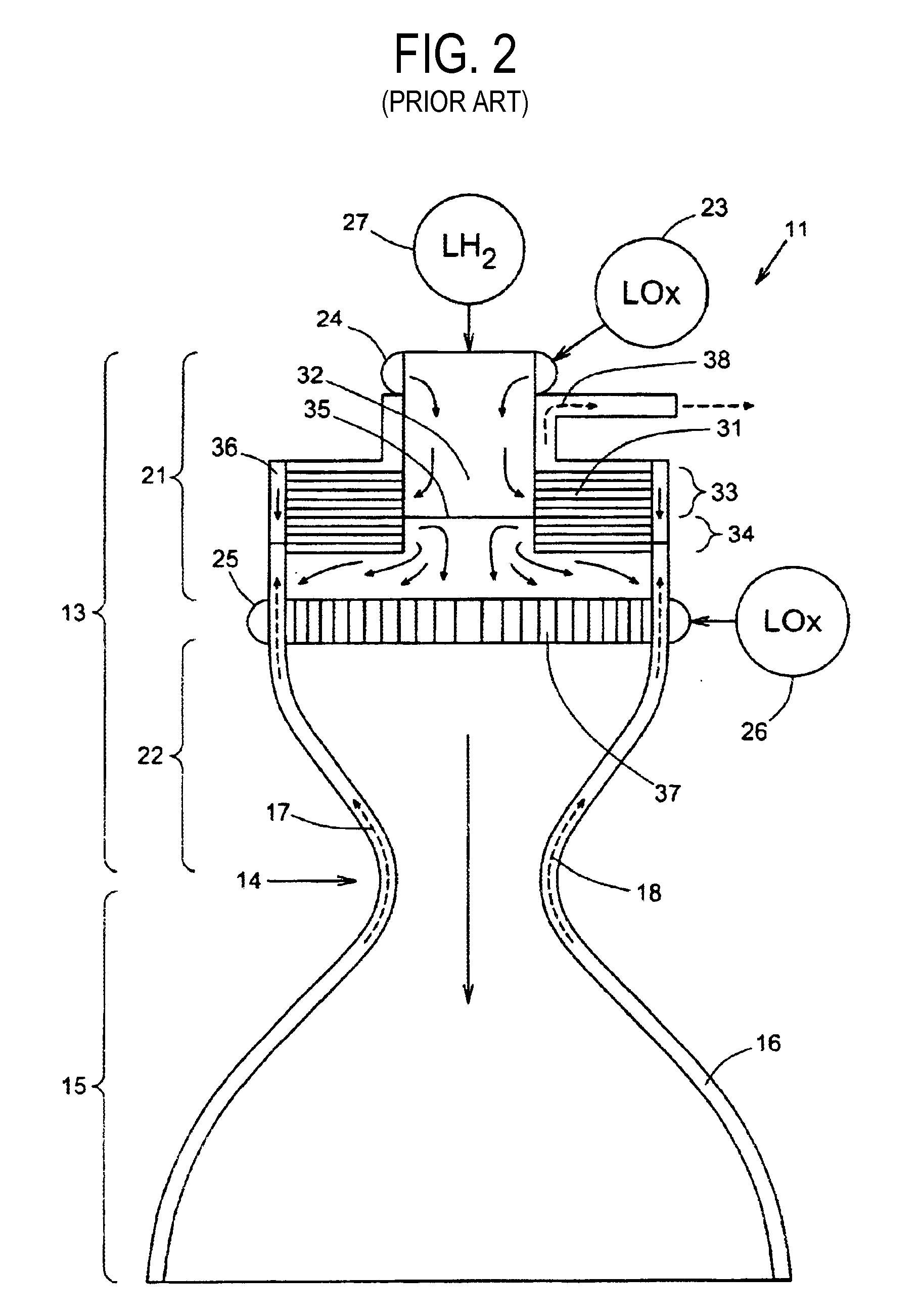Gas-Generator Augmented Expander Cycle Rocket Engine
a rocket engine and expansion cycle technology, applied in the field of rocket engines, can solve the problems of reducing the structural strength of the combustion chamber wall material, limiting the amount of available power to drive the turbomachinery, and engine with extremely high performance but also a high degree of complexity
- Summary
- Abstract
- Description
- Claims
- Application Information
AI Technical Summary
Benefits of technology
Problems solved by technology
Method used
Image
Examples
Embodiment Construction
[0035]The descriptions provided herein in accordance with the drawings have been provided for purposes of illustration and not for limitation. A person of ordinary skill in the art understands and appreciates that there are many variations of the present invention not shown that do not depart from the spirit of the invention and the scope of the appended claims.
[0036]FIG. 4A is a simplified view of a first embodiment of a gas-generator augmented rocket engine according to the present invention. A person or ordinary skill in the art understands that the flow circuit shown in FIG. 4A is simplified so as not to obscure the invention with unnecessary detail. There are also a number of valves, ancillary lines, and by-pass pathways most of which are not shown on the diagram, but could typically be included. FIG. 4B uses the same reference numerals except they are increased by 1000, and indicates the same components as their counterparts in FIG. 4A, except for the second nozzle, which is d...
PUM
 Login to View More
Login to View More Abstract
Description
Claims
Application Information
 Login to View More
Login to View More - R&D
- Intellectual Property
- Life Sciences
- Materials
- Tech Scout
- Unparalleled Data Quality
- Higher Quality Content
- 60% Fewer Hallucinations
Browse by: Latest US Patents, China's latest patents, Technical Efficacy Thesaurus, Application Domain, Technology Topic, Popular Technical Reports.
© 2025 PatSnap. All rights reserved.Legal|Privacy policy|Modern Slavery Act Transparency Statement|Sitemap|About US| Contact US: help@patsnap.com



